
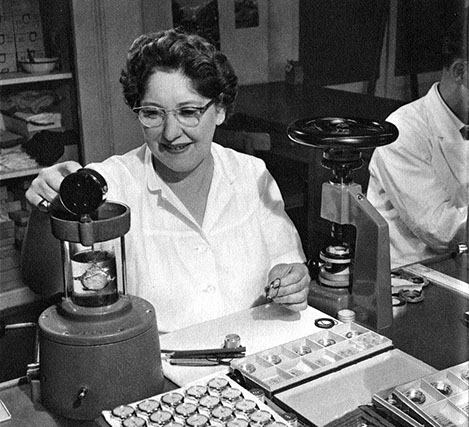
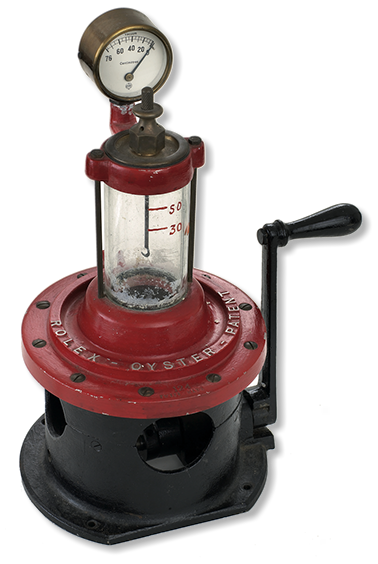
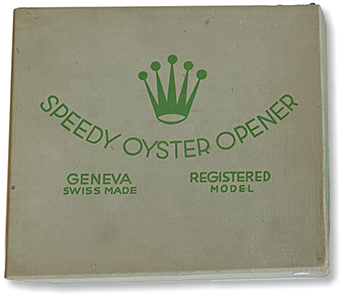
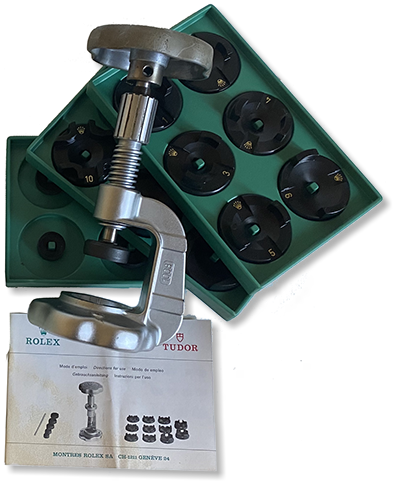
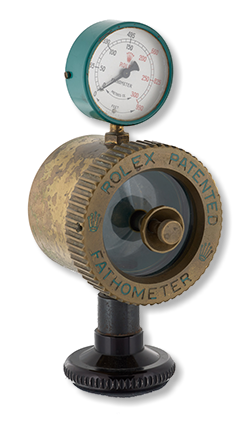
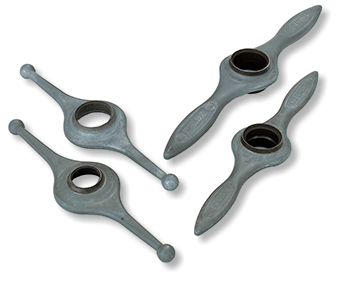
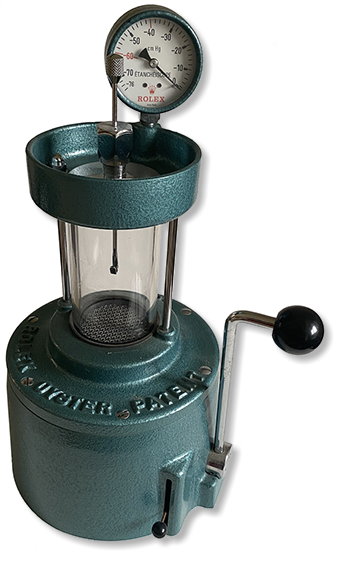
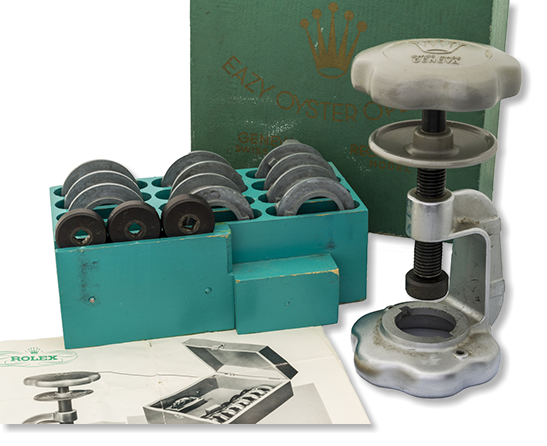
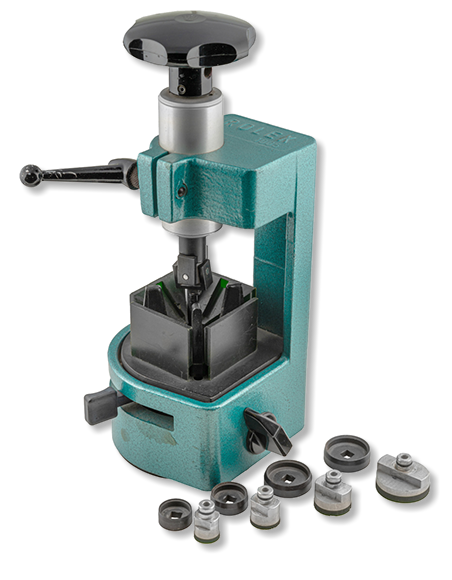
Rolex manufactured a number of high quality tools that were "contracted" or loaned out exclusively to its network of authorized service centers throughout the world. But there were stringent rules governing their distribution partly because some of their designs were considered intellectual property. For example, the vacuum tank designs created by Rolex were patented and closely guarded. This tool confirmed the integrity of the waterproof seals on a watch and the depth to which it could be submerged. It is not surprising that Rolex insisted that all provided tools had to be eventually returned. But despite their policies and best efforts, some Rolex tools have found their way to the second hand market where aficionados still vie to add them to their personal collections.
Unlike most other memorabilia, Vintage Rolex tools can still serve their intended purpose very effectively. This is especially true where Rolex case openers are concerned. They are not only collectible, but regarded as indispensable by many experienced collectors. Rolex case openers are capable of opening the most stubborn of Oyster cases, which is an absolute necessity prior to making a serious purchase commitment.
Heavy Duty Case Opener ref. 1005
circa 1980s
Propeller Opener Keys
circa 1940s - 1960s
No. 1: 28.3 / 29.5 mm
No. 2: 22.5 / 26.5 mm
No. 3: 26.5 mm,
No. 4: 20.2 mm.
The case holder(vice) mountable on workbench using bolts.
There were two versions of the Speedy Oyster Case Openers (and closers), ref.1001 and
ref. 1008 are probably the most useful and effective collectible vintage Rolex tools produced. They were so well engineered that they can open the most stubborn of Oyster cases, making them indispensable to collectors and watchmakers alike.
Rolex Vacuum tanks were patented in the 1950s by Rolex for testing waterproof watches.
The chamber was filled with water and a watch case would be submerged. The lever or knob was used to create a vacuum, drawing air from the submerged case. If escaping air bubbles were present, they would indicate a breach and also the location of the potential leak
Rolex Fathometer
circa 1950s
Vacuum Chamber
ht 25 cm.
Vacuum Tank
Ref. 1000
circa 1960s.
Ht. 37 cm.
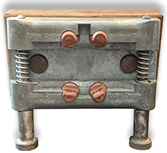
Vacuum Tank
Ref. 124 Circa 1950s
ht. 36 cm
Speedy Oyster Case Opener/Closer
Ref.1008
circa 1970s
The main difference between the reference 1001 and 1008 is the automatic safety mechanism built into the newer ref. 1008. This is an extremely important feature that makes the ref. 1008 superior to the earlier ref. 1001.
Both tools work as a vice, clamping down on the case like a jaw and thereby locking the 'key' onto the knurling of the Oyster case. The big knob is used to open the case. The opening threads cause the Oyster case to expand, opposing the forces of the vice grip. On the ref. 1001, the pressure of the vice has to be released slightly after about a quarter turn before going any further. Neglecting to do so will strain the Oyster case threads against the much stronger force of the vice grip. Neglecting to release the grip pressure, will strain the threads until they eventually lose the battle break with a popping sound, causing damage to the Oyster case threads. The ref. 1008 alleviates this with a second set of smaller threads that are engineered to be the same size and angle as the Oyster case running in parallel to the Oyster case. When opening an Oyster case, the smaller threads automatically expand the vice grip , releasing the pressure on the Oyster case.
Speedy Oyster Case Opener/Closer
Ref.1001
circa 1960s
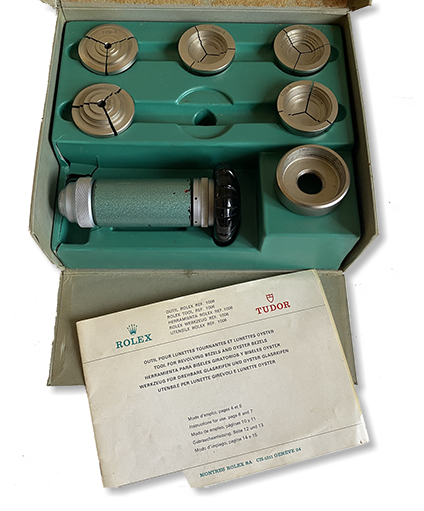
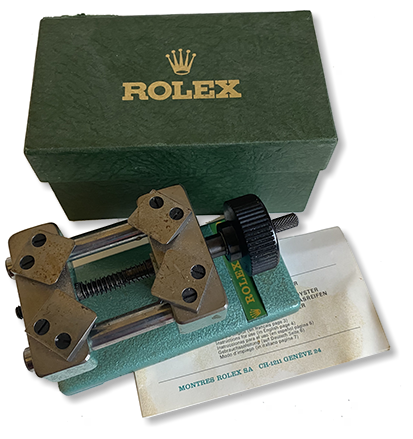
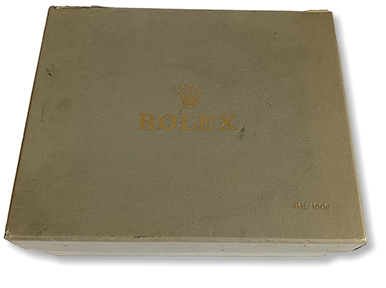
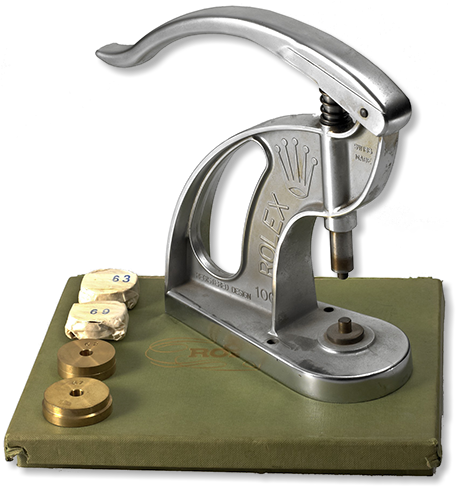
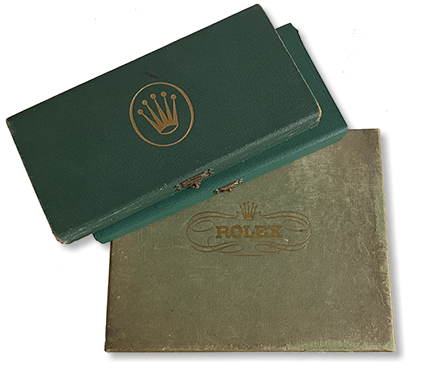
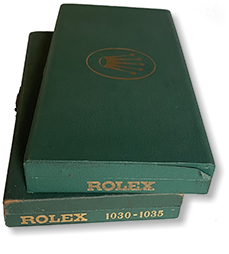
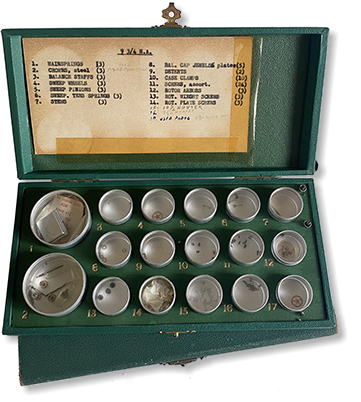
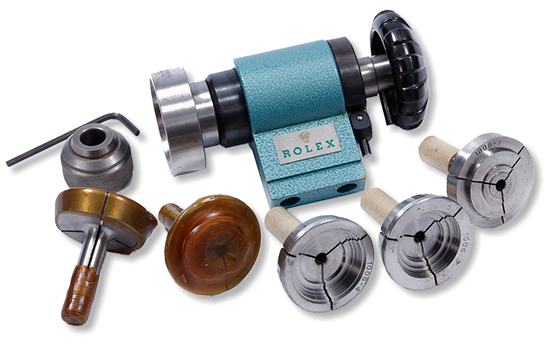
Despite most assumptions, bezels and crystal retaining rings, including those used on Rolex Sport models, were not always a perfect fit when they came off the manufacturing line. The Rolex used tools similar to the reference 100 to make fine adjustments at the factory when watches were assembled. This is the reason some bezels coming off the same reference models may not always be interchangeable. This very rare but indispensable tool was used by authorized service centers to expand or reduce the diameter of bezels and crystal retaining rings. It's not a very well known tool because of its rarity and infrequent use.
Levered Staking Tool Ref.1002.
circa 1960s
Bezel Removal Tool
ref. 1009
circa 1970s
Bezel Adjustment Tool
ref. 1006
5 chucks No. 1006-1,2,3,4, 5
circa 1970s
Parts Boxes
circa 1960s
Various Rolex Tools
circa 1960s-1980s
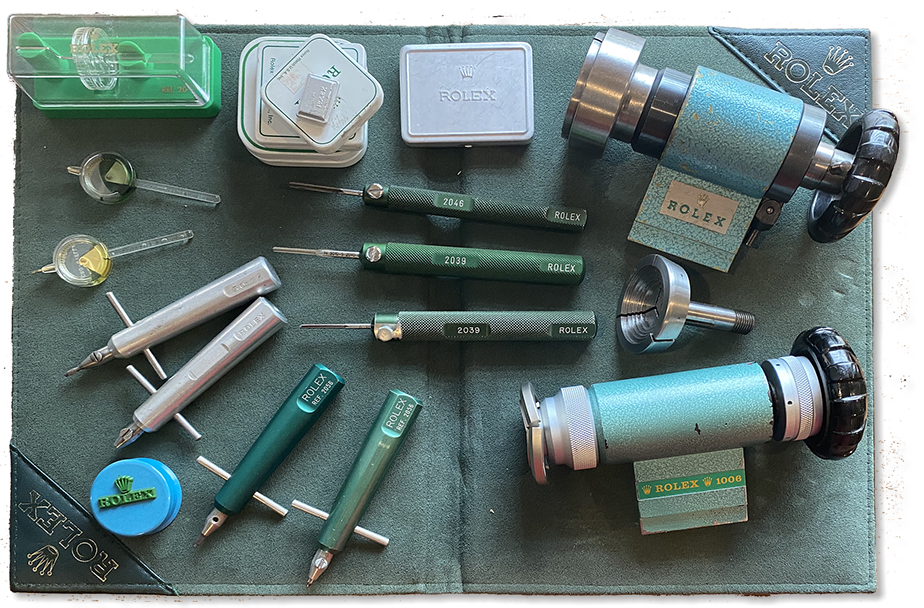
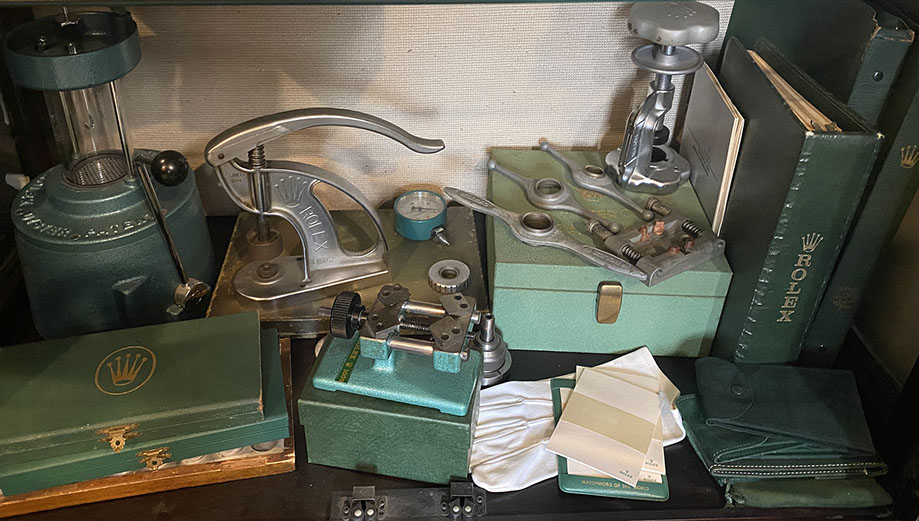
RolexHaven.com is intended for informational purposes only and is in no way sponsored, endorsed,
or affiliated with Rolex U.S.A., Rolex S.A. or any other Rolex worldwide subsidiary. © All Rights Reserved 2020